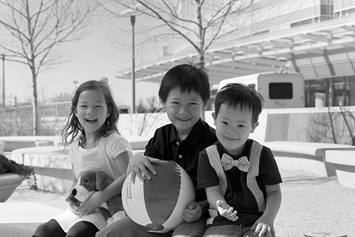Lichen Striatus
Lichen striatus is a skin rash that mainly affects children. It appears as pink raised spots that join together to form one or more dull red slightly scaly bands. It usually resolves within 6 months without treatment.
What Is Lichen Striatus?
Lichen striatus (LY kuhn stry AY tuhs) is a rash that appears as pink or lightly-colored, scaly, flat bumps. Over the following weeks, these bumps come together to form a line or band on the skin. Sometimes the rash can appear inflamed or redder, with a thicker scale. On darker-skinned individuals, the rash can appear more light-colored than red. Sometimes it can be itchy. This is most common on the arms and legs, but can also appear on the face, neck, trunk or buttocks.
This rash is common in school-aged children. Girls are more likely to have it than boys. It is not contagious (not spread from person to person). The cause is unknown, but it has been seen after:
- Viral infections
- Vaccinations
- Injury or trauma
How Is Lichen Striatus Diagnosed?
Your child’s doctor may be able to diagnose this during a physical exam. Rarely, a dermatologist may take a biopsy to confirm the diagnosis. This means a piece of skin will be removed and then looked at under a microscope.
How Is Lichen Striatus Treated?
Lichen striatus will go away on its own without treatment. This usually takes several months to a year. As the rash goes away, the bumps fade and may leave behind a lighter area of skin. This is not permanent. The normal skin color will return with time but may take several months.
No treatments are recommended since this rash goes away (resolves) on its own. However, if the rash is very itchy or irritating to your child, the doctor may prescribe an anti-inflammatory medicine such as a topical (on the skin) corticosteroid.
Helping Hands Patient Education Materials
Written and illustrated by medical, nursing and allied health professionals at Nationwide Children's Hospital, Helping Hand instructions are intended as a supplement to verbal instructions provided by a medical professional. The information is periodically reviewed and revised to reflect our current practice. However, Nationwide Children's Hospital is not responsible for any consequences resulting from the use or misuse of the information in the Helping Hands.
HH-I-400 | ©2016, revised 3/16, Nationwide Children’s Hospital



